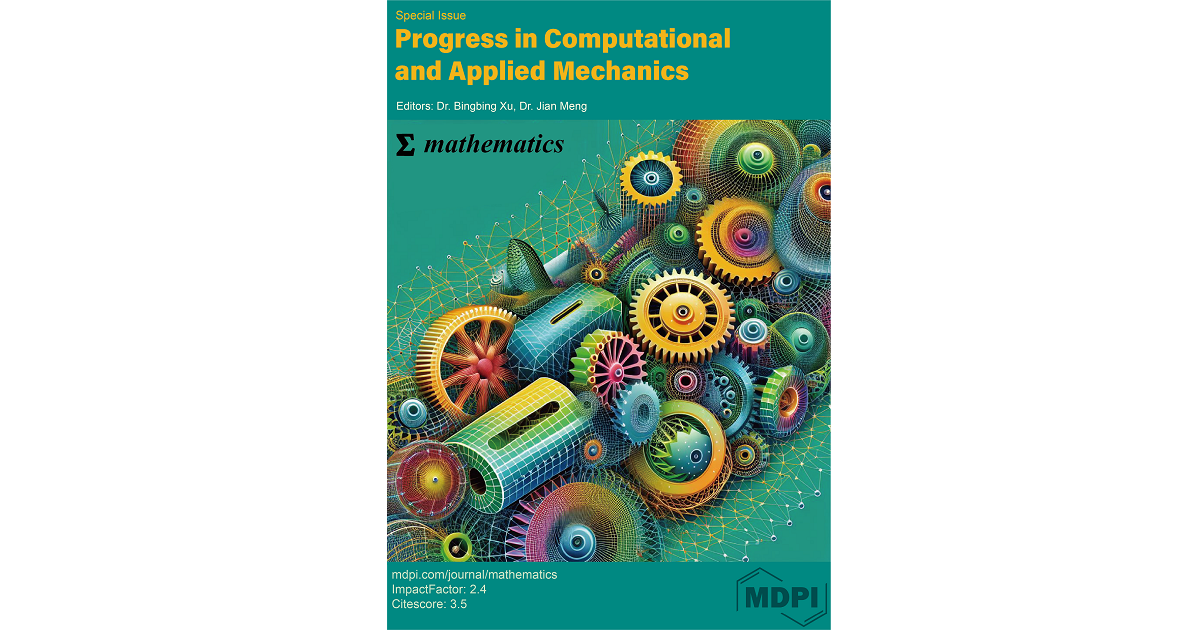Progress in Computational and Applied Mechanics
A special issue of Mathematics (ISSN 2227-7390). This special issue belongs to the section "E: Applied Mathematics".
Deadline for manuscript submissions: 31 December 2025 | Viewed by 1999

Special Issue Editors
Interests: virtual element method; nonlinear analysis
Interests: finite element method; virtual element method; eigenvalue problem; inverse problem
Special Issue Information
Dear Colleagues,
Computational and applied mechanics play an important role in engineering problems, allowing us to address a variety of challenges in various fields of science and engineering. This Special Issue endeavors to consolidate the forefront of computational and applied mechanics, spotlighting innovative research and envisioning future advancements. We encourage researchers to provide relevant papers, including theoretical development and rational applications of mathematical models, variational formulations, and numerical methods related to finite element, finite volume, virtual element, isogeometric and meshless discretization methods.
Topics of interest include, but are not limited to, the following:
- Computational methods: including finite element method, meshless method, virtual element method, and particle methods;
- Mechanics of materials: plasticity, damage, phase field fracture;
- Dynamics, vibrations, and waves in solids;
- Multiscale and multiphysics simulations;
- High-performance computing techniques;
- Uncertainty quantification and sensitivity analysis;
- Computational fluid dynamics: compressible flow, incompressible flow, numerical heat transfer.
Dr. Bingbing Xu
Dr. Jian Meng
Guest Editors
Manuscript Submission Information
Manuscripts should be submitted online at www.mdpi.com by registering and logging in to this website. Once you are registered, click here to go to the submission form. Manuscripts can be submitted until the deadline. All submissions that pass pre-check are peer-reviewed. Accepted papers will be published continuously in the journal (as soon as accepted) and will be listed together on the special issue website. Research articles, review articles as well as short communications are invited. For planned papers, a title and short abstract (about 100 words) can be sent to the Editorial Office for announcement on this website.
Submitted manuscripts should not have been published previously, nor be under consideration for publication elsewhere (except conference proceedings papers). All manuscripts are thoroughly refereed through a single-blind peer-review process. A guide for authors and other relevant information for submission of manuscripts is available on the Instructions for Authors page. Mathematics is an international peer-reviewed open access semimonthly journal published by MDPI.
Please visit the Instructions for Authors page before submitting a manuscript. The Article Processing Charge (APC) for publication in this open access journal is 2600 CHF (Swiss Francs). Submitted papers should be well formatted and use good English. Authors may use MDPI's English editing service prior to publication or during author revisions.
Keywords
- computational mechanics
- numerical methods
- finite elements
- meshless methods
- solid mechanics
- dynamics
- fluid mechanics
- computer simulation
Benefits of Publishing in a Special Issue
- Ease of navigation: Grouping papers by topic helps scholars navigate broad scope journals more efficiently.
- Greater discoverability: Special Issues support the reach and impact of scientific research. Articles in Special Issues are more discoverable and cited more frequently.
- Expansion of research network: Special Issues facilitate connections among authors, fostering scientific collaborations.
- External promotion: Articles in Special Issues are often promoted through the journal's social media, increasing their visibility.
- e-Book format: Special Issues with more than 10 articles can be published as dedicated e-books, ensuring wide and rapid dissemination.
Further information on MDPI's Special Issue policies can be found here.






